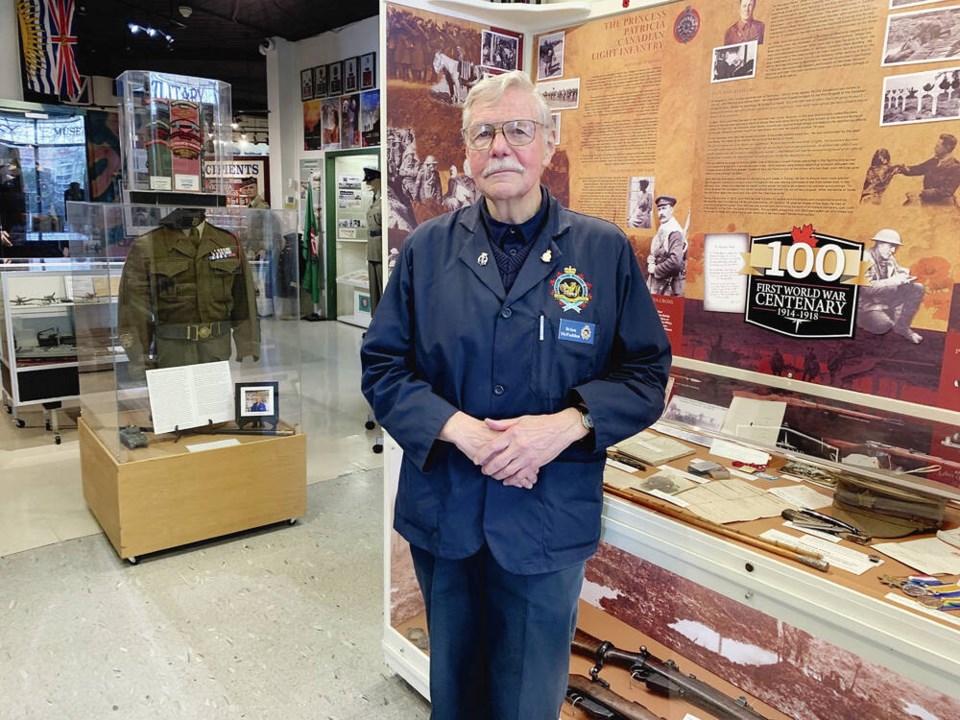A question from a visitor to the Vancouver Island Military Museum in Nanaimo inspired a soon-to-be opened exhibit at the facility.
According to museum vice-president Brian McFadden, a man from Metro Vancouver recently visited the museum on Cameron Road and asked whether McFadden had heard of the “CLC”.
“I said that I knew it was the Chinese Labour Corps, but beyond that knew very little,” said McFadden, standing inside the circular museum that has a rich and detailed collection of military artifacts in displays related mostly to Nanaimo veterans.
The collection includes the riding crop used by Canadian Corps Cmdr. Arthur Currie during the First World War, a framed photograph of Adolf Hitler that was used as a target and brought home by a Nanaimo veteran, and rare items linked to Nanaimo fighter ace Raymond Collishaw, with exhibits updated when new information or artifacts come in.
McFadden said the visitor believed he had a relative who had served with the CLC and survived the war but didn’t have any information about them.
“This led me to start researching the CLC and what I found was fascinating,” said McFadden, who hopes to have a new CLC exhibit open by May.
McFadden said that in 1916 and 1917, the French and British government negotiated with the Chinese government to have access to tens of thousands of male workers in Shandong Province who they wanted for labour on the Western Front in France and Belgium.
“Those recruited by the British were transported by ship across the Pacific Ocean to Victoria, then by train to Halifax and then by ship to France,” McFadden said. “The Canadian government kept the travel arrangement secret because at that time a head tax of $500 was charged on every Asian person entering the country.”
The head tax was repealed in 1923, but replaced with a law that effectively banned immigration from China until 1947. In 2006, the federal government apologized for these actions.
McFadden said that around 80,000 Chinese men were transported in sealed railway cars for the six-day trip from Vancouver to Halifax and weren’t allowed out of the cars. Some men who died along the way were buried in unmarked graves.
The men’s families were paid monthly but the men themselves didn’t receive any money.
McFadden said work cleaning up battle zones and loading and unloading equipment and ammunition was hard and dangerous.
Around 2,000 CLC members died during the war and are buried in Commonwealth War Graves Commission cemeteries in Belgium and France, while several were awarded the Meritorious Service Medal for bravery under fire.
The CLC was kept in France until late 1919, when they were sent back to China the same way they arrived.
“They received little or no recognition in history books or war memorials for their contribution and sacrifices during WW 1,” McFadden said.
A large mural painted in Paris to commemorate Allied forces had a section devoted to the CLC. However, that was painted over to make way for images of American soldiers, once that country entered the war in 1917.
The Vancouver Island Military Museum costs $4 to visit and is free for veterans. It receives around 3,500 visitors a year.
McFadden said he is amazed at how much military memorabilia, including uniforms and medals, is brought to the museum each year. He said the volunteer-run organization works on building the human story behind the artifacts on display.
>>> To comment on this article, write a letter to the editor: [email protected]



